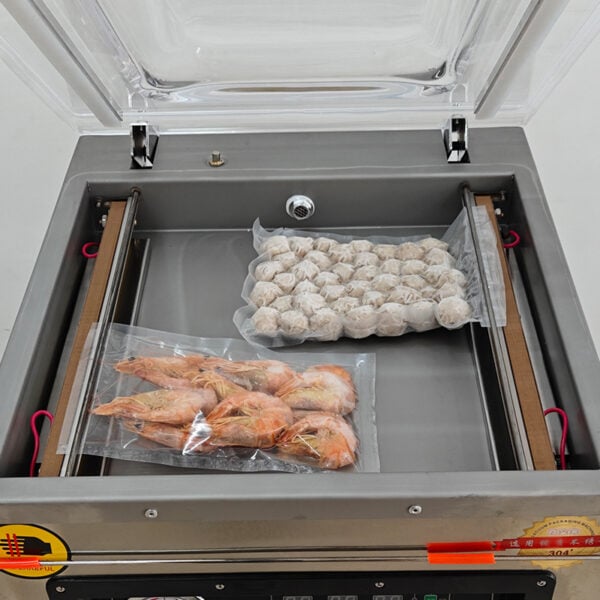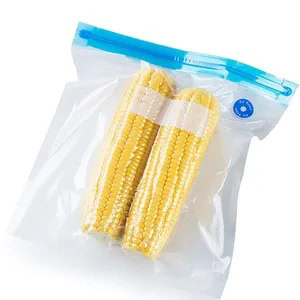Many people want to keep their food fresh without needing a vacuum sealer, but without proper storage, food quality can degrade quickly, leading to waste and increased costs. Fortunately, there are simple DIY methods to seal foods air-free, even without a vacuum sealer, ensuring better preservation.
To seal food without a vacuum sealer, use the water displacement or straw suction method, airtight containers, or heat sealing techniques to create an airtight environment and extend freshness.
This guide will walk you through multiple effective ways to seal foods without special equipment, helping you save on costs and reduce food waste.

Water Displacement Method
The water displacement method is one of the easiest and most effective ways to remove air from a bag. By submerging a bag of food in water, the surrounding pressure pushes out most of the air before sealing the bag.
- How to Use It:
- Place the food in a resealable plastic bag, leaving a small opening at the top.
- Submerge the bag in a bowl of water until the food is below the surface, pushing the air out as you do.
- Seal the bag at the waterline to trap the minimal remaining air.
- Benefits: This method is quick and works particularly well for foods that will be frozen, such as meats, vegetables, or baked goods. The water displacement method can effectively minimize air in the bag, which is key to preventing freezer burn.
Straw Suction Method
The straw suction technique is another DIY option for those without a vacuum sealer. This method works well with Ziploc bags, and it’s a handy option for smaller food portions or lightweight bags.
- Steps:
- Place a straw in the opening of a resealable plastic bag filled with food.
- Suck out the air using the straw, then quickly pull the straw out while sealing the bag.
- Advantages: Ideal for small amounts of food and provides a vacuum-like seal without much effort. Use this method for foods stored in the fridge or short-term freezer items.
Use of High-Quality Freezer Bags
Freezer bags are thicker and offer better protection than standard plastic bags, which is essential for long-term storage. Pair these bags with the above methods for optimal results.
- Why Freezer Bags?
Freezer bags have a stronger seal, are less permeable to air, and reduce the risk of moisture getting in. Whether you are storing meats or using a powder filling machine to store pantry goods, high-quality bags can protect your food effectively. - Best Practices: For an even stronger seal, remove excess air with a straw or submerge in water (as explained above) before sealing. This combination can effectively prevent freezer burn.

Heat Sealing with Household Items
You can use household items like a hair straightener, iron, or candle to seal plastic bags. This technique provides a more permanent seal, ideal for dry goods or prepared meals.
- How It Works:
- Place food in a plastic bag and leave a small opening.
- Using a low-heat setting, gently press along the edge of the bag with the heated tool to seal it. Avoid overheating to prevent the bag from melting.
- Safety Precaution: Always use heat cautiously and avoid applying too much pressure. This technique is perfect for long-term storage and works especially well with dry goods.
Ziploc Bag and Weight Technique
If you don’t have a vacuum sealer, Ziploc bags can still be used to store food with minimal air. This method uses the weight of the food itself to help push out air.
- Steps:
- Place the food in a Ziploc bag and seal most of it, leaving a small gap for air to escape.
- Press down on the food to push out any remaining air and seal the bag completely.
- Ideal For: This technique is particularly effective for solid foods like meats and vegetables and can be enhanced by freezing to keep the air out.
Reusable Silicone Bags
Reusable silicone bags are eco-friendly, durable, and naturally airtight. These bags are an excellent option for everyday use, especially when paired with air-removal methods.
- Using Silicone Bags:
- Place food in the silicone bag and push out as much air as possible.
- If using for freezer storage, combine this method with a water displacement approach for extra protection.
- Benefits: These bags are reusable, making them both economical and environmentally friendly. Perfect for snacks, cut fruits, vegetables, and leftovers.
![]()
Homemade Airtight Containers
Airtight containers such as mason jars can be an effective alternative for storing dry or liquid foods without a vacuum sealer.
- Instructions: Place food in the jar, add a plastic wrap layer under the lid for extra sealing, and tightly close the lid.
- Best For: Works well with dry goods such as pasta, beans, nuts, or items that require a seal but do not need long-term freezing.
DIY Vacuum Seal with a Hair Dryer or Fan
If you want a simple way to mimic a vacuum seal, use a hair dryer or fan to blow out air before sealing the bag. This method is convenient for lightweight foods like vegetables or items that don’t require complete vacuum sealing.
- Steps: Place food in a bag, close the bag partially, and use a hair dryer on cool or fan to remove air.
- Ideal Usage: This works well for short-term storage and is ideal for those using an industrial label printer to label bags for organization.
Using Oxygen Absorbers in Jars
Oxygen absorbers are excellent for dry storage and can create a vacuum effect when used in airtight jars.
- Method: Add an oxygen absorber to a jar filled with dried foods, such as grains, herbs, or dehydrated items.
- Purpose: Oxygen absorbers are ideal for long-term storage, and the jars can be labeled using a labeling machine for easy identification.

Wrapping and Freezing Technique
To prevent freezer burn without a vacuum sealer, wrap foods in plastic wrap and then place them in freezer bags, ensuring as much air as possible is removed.
- Instructions: Wrap the food tightly in plastic wrap, then place in a freezer bag using one of the air-removal techniques.
- Works Best For: This technique is particularly effective for meats and can be used with a corner wrap labeling machine to keep things organized in your freezer.
Conclusion
Using simple tools and methods, you can effectively seal food for storage without needing a vacuum sealer. These techniques ensure freshness, prevent freezer burn, and offer flexible, affordable solutions for keeping food airtight, from fresh produce to dried goods.









